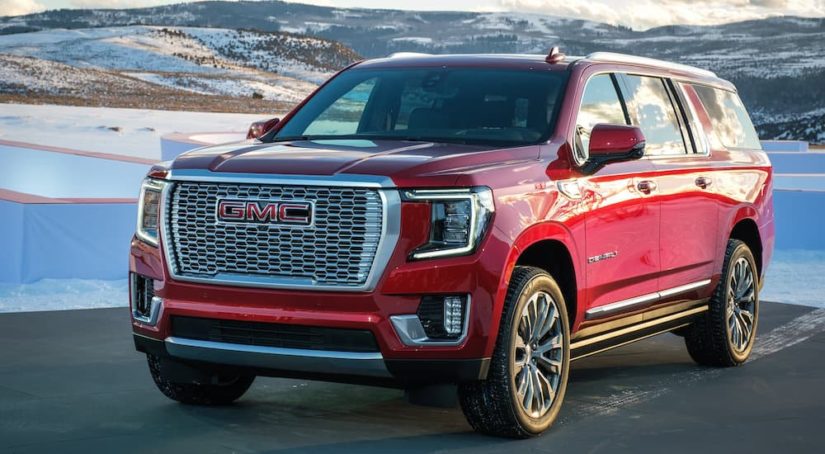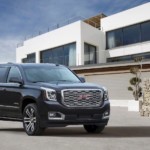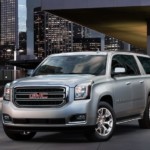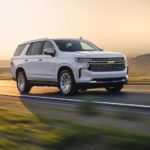Often referred to as the “land yachts” of the automotive world, full-size SUVs are known for being cumbersome to handle and slow to respond. Drivers who opt for a full-size SUV aren’t exactly looking for sport-like performance, but automakers like GMC aren’t taking that entirely off the table. Power, capability, sophistication, and innovation are only part of what you’ll find when you slate two best-selling full-size SUVs against one another–the 2022 GMC Yukon vs 2022 Toyota Sequoia.
GMC is one of America’s leading automakers and is known for building luxurious and capable vehicles like the 2022 Yukon at affordable prices. On the other hand, Toyota hails from Japan and is renowned for its expansive lineup of cars, trucks, and SUVs that are versatile, reliable, and hold their value incredibly well. So, how can you possibly choose between models like the Yukon and Sequoia? It starts with a closer look at three core components–performance, spaciousness, and technology.
Performance: Powertrains and Handling
GMC knows firsthand that drivers like to have choices, especially regarding what’s under the hood. The 2022 Yukon’s multi-engine lineup gives you plenty of options, which is a stark contrast to the 2022 Sequoia’s standard and only engine. This immediately gives the Yukon a significant advantage over the Sequoia. So, what type of power can you expect from the SUVs?
The 2022 Sequoia comes equipped with a 5.7-liter V8 engine mated to a 6-speed automatic transmission. This combination delivers 381 horsepower for exceptional power and 401 lb-ft of torque, making the Sequoia quick to accelerate and more than capable of towing loads up to 7,400 pounds. However, while the engine earned an Ultra-Low Emission Vehicle III rating, its power comes at the cost of efficiency, with the two and four-wheel drive models averaging 13 MPG in the city and 17 MPG on the highway.
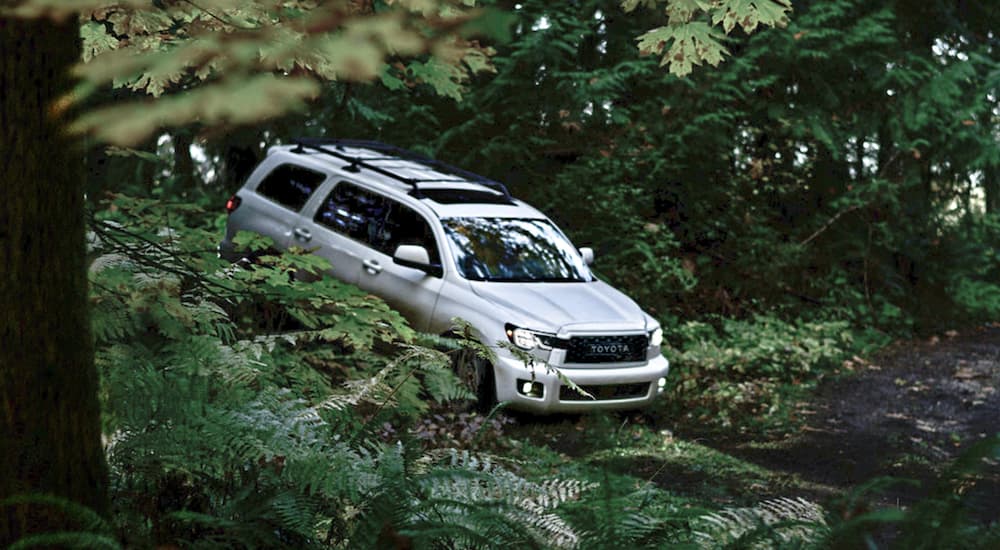
If you’re not happy with one powerplant option, then you’ll want to consider the 2022 Yukon. GMC gives you a choice between three capable engines, all of which are mated to a 10-speed automatic transmission for seamless shifting and a wider range of power. Starting the Yukon’s powertrain lineup is the 5.3-liter V8 that delivers 355 horsepower and 383 lb-ft of torque, making the Yukon capable of towing up to 8,400 pounds. With this powertrain, you can expect the Yukon to average 15 MPG in the city and 20 MPG on the highway, which means you’ll spend far less on fuel even with this entry-level powerplant.
The Yukon’s real power starts with the 6.2-liter V8 engine that comes standard on the Denali and is available on the rugged and adventure-ready AT4. The 6.2-liter V8 delivers 420 horsepower and 460 lb-ft of torque for exceptional handling and immediate acceleration that will make you forget you’re driving a full-size SUV. With this setup, you can tow loads up to 8,200 pounds and expect an average of 14 MPG in the city and 20 MPG on the highway when you’re not towing a trailer.
GMC’s Duramax Turbo-Diesel is the most impressive and makes the 2022 Yukon one of the most efficient full-size SUVs in the segment. Delivering 277 horsepower and 460 lb-ft of torque, the Duramax averages 21 MPG in the city and 27 MPG on the highway. This efficiency translates to a 648-mile range on a full tank in the Yukon and 756 miles in the Yukon XL.
Final Verdict: If you’re looking for options, skip the Sequoia and head straight for the Yukon with its three-engine lineup.
Spaciousness: Passenger and Cargo Space
If you’re shopping for a full-size SUV, cabin size is a factor. You need plenty of room for passengers and cargo, but not all full-size SUVs are equal when it comes to size. GMC recognizes this firsthand and offers not only the standard 2022 Yukon but the longer and more spacious Yukon XL that’s even more passenger and cargo-friendly. You won’t find anything comparable to the Yukon XL in the Sequoia lineup, which gives GMC a bigger lead against its rival.
The Sequoia’s wheelbase of 122 inches is significantly longer than the Yukon at 120.9 inches, but how the automakers design the SUVs around the platform determines passenger and cargo capacity. Because of this, it’s even more important to look at the length, width, height, and interior dimensions of each model. For example, the Sequoia measures 205.1 inches long, 79.9 inches wide, and 77 inches tall. In contrast, the Yukon is much larger at 210 inches, 81 inches, and 76.5 inches, respectively, with the Yukon XL adding 15.2 inches of length to yield 225.2 inches.
The Yukon has a significant advantage in size, even considering its 0.5 inches shorter than the Sequoia. This translates to more room for passengers and cargo. For example, the Yukon offers 42.3 inches of headroom in the front row, while the Sequoia offers only 34.8 inches. The third row is even more cramped, with the Sequoia offering 34.5 inches compared to the Yukon at 38.2 inches. Legroom is another significant factor to consider and once again puts the Yukon in the lead, with the XL offering 36.7 inches of room in the third row as opposed to the Sequoia at 35.3 inches.
What about the cargo room? Both the Yukon and Sequoia offer ample space for gear, whether you’re hauling groceries, luggage, furniture, or other items. You’ll have access to 120.1 cubic feet of cargo room in the Sequoia with the second and third-row seats folded. The Yukon offers 122.9 cubic feet, while the Yukon XL lives up to its name and offers 144.7 cubic feet.
Final Verdict: If you want a versatile cabin that maximizes space and offers plenty of room for passengers and cargo, you can’t go wrong with the Yukon or Yukon XL.
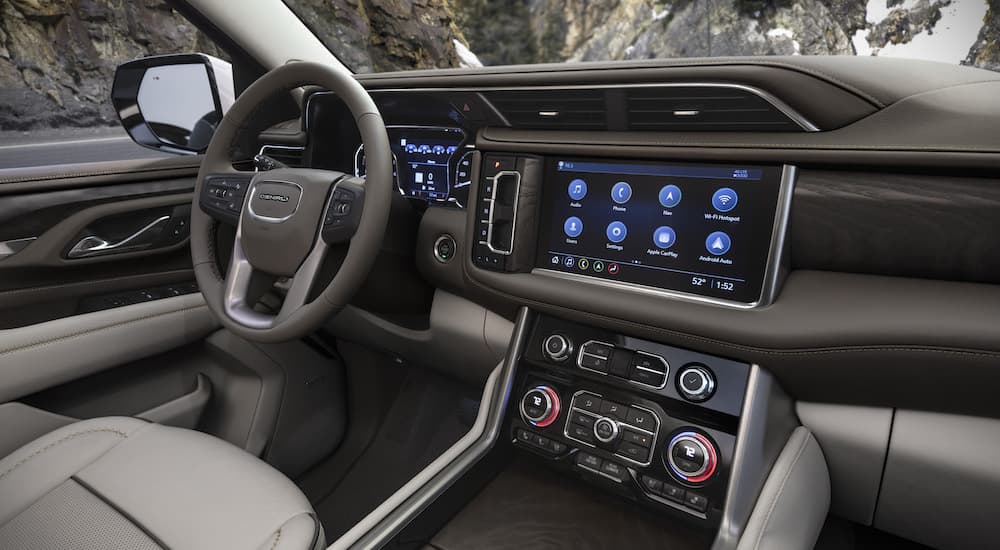
Technology: Connectivity and Safety
While connectivity and safety features are standard across the industry, GMC and Toyota take distinct approaches in how they deliver this technology. GMC positions itself at the helm of innovation and is an early adopter of cutting-edge technology that keeps you connected and informed when you’re in the driver’s seat. This is apparent in the Yukon’s 10.2-inch center touchscreen display that’s home to the Chevrolet infotainment system and offers everything from smartphone integration and an available WiFi hotspot to Amazon Alexa capability. On the Sequoia, you’ll find similar features, but you’ll have to navigate a smaller, 7-inch display.
Toyota and GMC prioritize your safety and equip both lineups with advanced safety and driver-assist tools. On the Yukon, this suite includes Automatic Emergency Braking, Forward Collision Alert, Front and Rear Park Assist, a Following Distance Indicator, Front Pedestrian Braking, and IntelliBeam automatic headlamps. On the Sequoia, Toyota’s Safety Sense-P suite includes a Pre-Collision System with Pedestrian Detection, Dynamic Radar Cruise Control, Automatic High Beams, and Lane Departure Alert with Sway Warning. GMC, however, doesn’t stop with its standard suite and offers a host of available features, including a class-leading 15-inch head-up display and a surround vision camera system that offers up to 13 camera views, neither of which you’ll find on the Sequoia.
Final Verdict: If you love trying out new technology, get behind the wheel of the Yukon and check out its expansive displays and cutting-edge features.
What Will You Drive?
Which full-size SUV better meets your needs? Will you drive off the lot in a 2022 GMC Yukon or the 2022 Toyota Sequoia? If you’re looking for a full-size SUV that gives you the power you need, plenty of room for passengers and cargo, and a host of advanced technology, then you’ll be right at home behind the wheel of the 2022 Yukon. It’s the SUV that redefines the segment and proves that full-size SUVs are no longer land yachts but sophisticated family-haulers that are more than capable of meeting all the demands of your life.
